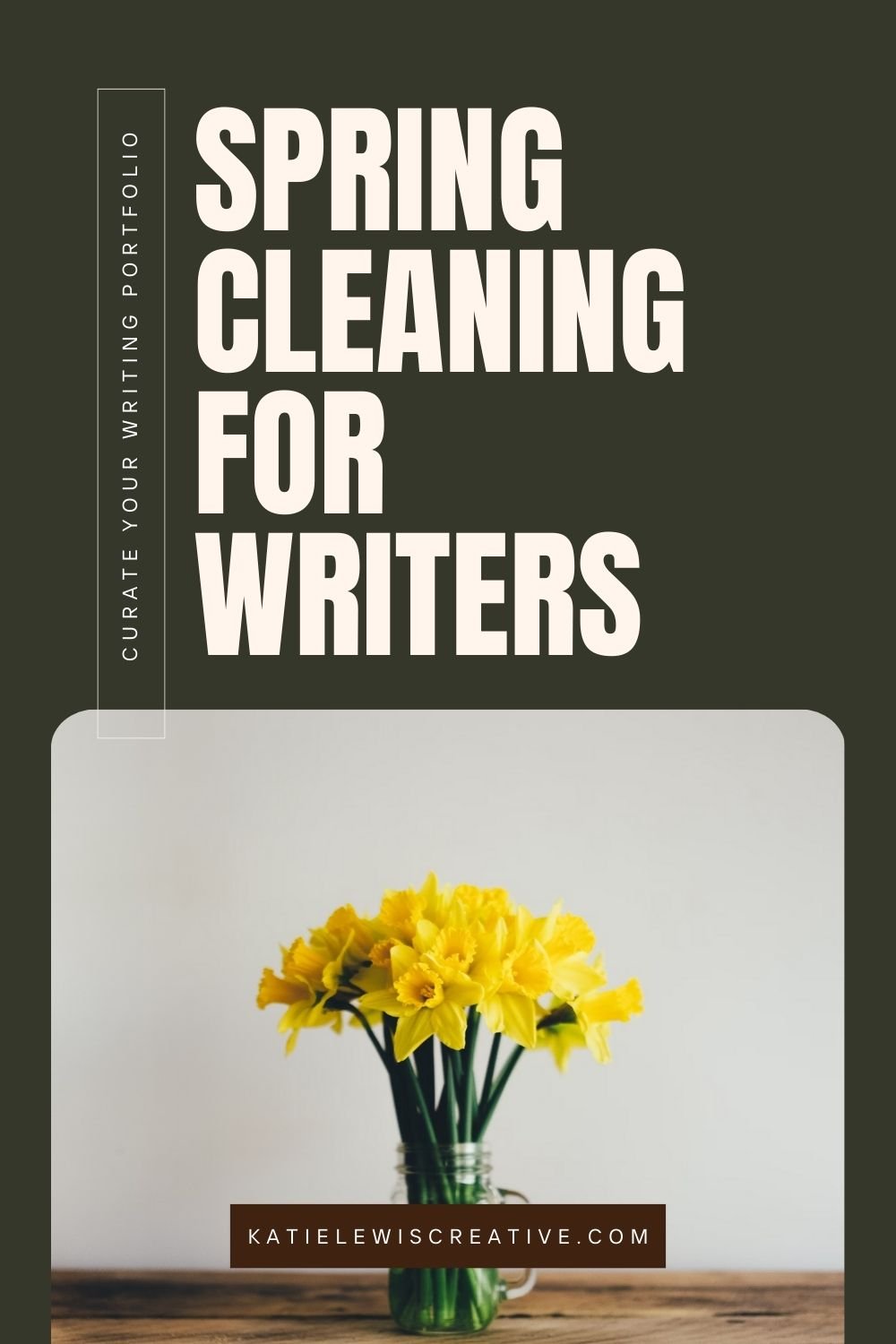Spring cleaning for writers
When first building a writing portfolio, you tend to stuff it full of everything you’ve ever written. You want to represent all the potential you have, so MOAR EXAMPLES!
After grooving for a year or two, you can narrow down the type of work you want to be doing. Maybe you love writing company About pages and loathe creating social posts, so you whittle your portfolio to include the projects you most enjoy.
Once you’re established, though, you’re a pro. Each project you work on is shining, shimmering, splendid. There’s no longer a reason to include all projects. Let the quality speak for itself.
So listen up, my fellow scribes: It’s time for spring cleaning — your writing portfolio.
Image courtesy Annie Spratt
Why you should update your writing portfolio
I’ll keep this brief: You want to attract better opportunities.
If I could tell my younger freelance self anything, it would be to spend energy in the right places. I used to get so many inquiries (hurray!) that I spent too much time prospecting (ugh) only to learn the project wasn’t the right fit (sigh).
Make 2025 the year you spend more time on growth. And a strong, clean writing portfolio is where to begin.
What you need in your writing portfolio
Writing samples that represent the type of work you want to be doing. You’ll attract what you’re putting out there, and if you’re still displaying the client resumes you used to whip up early on in your career, it’ll certainly seem like that’s work you still take on.
Your best writing clips. Don’t include projects you aren’t super proud of because you had to make a ton of concessions or client-demanded changes, or work that you’ve evolved beyond.
Client testimonials. I keep these on a separate page right now, but it gives potential clients the whole story when the project and the client’s testimonial are in the same place.
Categories. It’s cleaner for the reader to peruse a portfolio divided into work types. They can jump directly to the samples that line up with the work they’re looking to have done.
For you, maybe that’s Blog posts, Email marketing newsletters, and Marketing brochures.
Or maybe you want to divide by industry: Health care, Law, and Politics.
Attract the client you want
Once you know the type of client you want to work with — most of my freelance and contract clients are in SaaS and e-commerce — do your industry homework.
Ask yourself these questions:
What type of content does a potential client have a lot of? What type of content do they need more of?
Where’s that industry spending money right now?
How has AI changed their goals, and what value do you offer?
Use LinkedIn to your advantage, too. In Q1 2025, I kept an open LinkedIn tab that searched for “launch new website.” I was looking to add more online content projects to my portfolio, and this helped me find companies that were posting about their new sites. Know what new sites often need? Resource guides, white papers, and blog posts. That’s my bread and butter.
But before you add anything to your online writing portfolio …
… Get the client’s permission first. I include a graf about this in my services contract so everyone’s on the same page.
Here’s how I put it:
The Client acknowledges that it is within Katie Lewis’s right to share, post online, link to, and claim the creation of each piece of content for the purpose of marketing and promoting her business, whether written under her byline or ghostwritten. Katie Lewis agrees to immediately remove all content shared/posted/linked from all locations at the request of Client, at any point in the future, if a legal issue should arise as a result of the content published; or if Client submits a written request for such removal for any other reason. Links to these content pieces may appear in her online and printed portfolios until such time as the Client submits a request for the removal of such content.
At times, a client will ask for this clause to be removed. I comply sometimes, because I’m not fussed about it, but other times, if I feel the project will exhibit a new range in my portfolio, we’ll keep talking about it.
The point is, you want both sides to feel good about you claiming the work online.
What you don’t need in your writing portfolio
Old formatting. As your writing changes, so does your preferred styling. Whereas you might have used double dashes years ago - - you now use em dashes — and they need updating. (Talking to myself here; there are loads of double dashes on this site, ugh.)
Broken links. Clients change their site navigation, companies go out of business, PDF storage changes, etc. Check all your links.
Old work. Just as you wouldn’t include jobs from 20 years ago on your resume, don’t include projects that are now old enough to vote.
A smarter writing portfolio for a stronger writing career
Curating your writing portfolio isn’t a one-and-done task, so think of it as a seasonal project. (It’s also a good reason to have a webpage as your portfolio instead of a handful of PDFs you’re attaching to emails; ew.) Whether you’re just starting out or have a polished client list and killer clips, spring cleaning your portfolio keeps you aligned with the work you actually want to be doing.
By showing your strongest, most relevant samples (and ditching the ones that don’t serve you anymore; byeeee resumes!), you’ll attract better clients and spend more time doing the work you love.
So go on: Toss what no longer reflects your best self, and make room for what’s next. I can’t wait to see all that you accomplish.
You might also be interested in:

